

Number & place value in Year 2 (age 6–7)
In Year 2, your child will learn to compare and order numbers from 1 to 100. They will recognise the place value of two-digit numbers, and will be able to use this to solve problems. They will also make more use of number lines and will be able to use less than (<), more than (>), and equals (=) symbols.
The key words for this section are number and place value .
What your child will learn
Take a look at the National Curriculum expectations for number and place value in Year 2 (ages 6–7):
Count in 2s, 3s, and 5s from 0, and in 10s from any number
Recognise the place value of two-digit numbers.
For example, in ’25’, they will understand that the first number (2) shows the number of tens, and the second number (5) shows the number of ones. So there are two tens and five ones in the number 25. Note that your child will say ones and not units when talking about place value.
Identify, represent, and estimate numbers shown in different ways
Your child will be expected to use objects, drawings/diagrams/pictures, number lines and 100 squares , and symbols to represent numbers. They will make these representations themselves, and will also be able to understand them when someone else has made them.
Your child will also start to estimate numbers based on different representations. For example, they will be able to say, ‘each of those piles of sticks has about 10 sticks, so we have about 30 sticks.’
Compare and order numbers from 0 to 100
Your child will be able to compare two numbers to say which one is bigger and which one is smaller. They will also be able to explain why:
47 is more than 29 as 47 has 4 tens compared with 29 which only has 2 tens.
Your child will learn to put a selection of numbers between 0 and 100 in order:
46, 19, 3, 76, 43, 79 in order from smallest to largest are 3, 19, 43, 46, 76, 79.
Your child will use the words will use the words more , less , fewer , more than , less than , equal to , equivalent to , and the same value as when comparing numbers. They will use the word fewer when working with things that can be counted, and less when working with abstract numbers and things that are continuous .
‘I have 3 fewer sweets than you.’ ‘There is less water in the glass than in the bottle.’ ‘25 is less than 42.’
They will also be able to use the more than (>), less than (<) and equals (=) symbols to compare numbers.
Read and write numbers up to at least 100
Your child will read and write numbers to at least 100 in numerals (1, 2, 3, and so on) as well as in words (one, two, three, and so on).
Writing out the numbers 10–20 can be particularly tricky for children, so your child might need a bit more focus on these numbers to start with.
Use place value and number facts to solve problems
‘If I have 6 apples and you have 4 apples, how many apples do we have altogether?’
To solve this problem, your child needs to understand that zero can be used as a placeholder in numbers like 10, where the ‘1’ means that there is one ten, and the ‘0’ means there are no ones.
How to help at home
There are lots of ways you can help your child to understand number and place value. Here are just a few ideas:
1. Represent numbers creatively
Showing numbers in interesting ways really helps your child to understand number and place value. Objects from around the home like buttons, dried pasta shapes, marbles, or pencils are great to practise counting and organising numbers. For example, ’32’ could be represented by 32 marbles arranged into three groups of ten and two ones.
As well as objects, your child can use drawings, diagrams, or symbols to represent numbers. For example, you could draw 23 stick figures, then draw a circle around each group of ten, with three left outside of the circles. This shows that 23 is made from two tens and three ones.
Video: What is number?
Get a simple definition of the concept of number and the difference between cardinal, ordinal and nominal numbers with this fun animation.
2. Play a matching game
Your child will be expected to write numbers up to 100 using numerals and words. You could support their learning by playing a matching game.
Make two sets of simple cards or pieces of paper. On one set of cards, write numbers in numerals (for example, ’67’). On another set of cards, write the matching number names (for example, ‘sixty-seven’). Mix all the cards up and play snap.
Activity: Number words
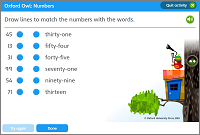
3. Compare and order numbers
Encourage you child to talk through how they know that one number is bigger or smaller than another:
I know that 32 is smaller than 76, because 32 only has 3 tens, and 76 has 7 tens.
Encourage your child to use more than (>) and less than (<) symbols when comparing numbers. For example, they could write 32 < 76 or 76 > 32.
You could practise ordering with a card game. Write twenty two-digit numbers and the ‘>’ and ‘<‘ symbols on separate pieces of paper. Deal your child two numbers, face down. Ask them to turn over the pieces of paper and to use the ‘>’ and ‘<‘ symbols to show which number is bigger or smaller.
Activity: Number statements

When your child is counting objects, ask them to estimate how many there are before they count them. Being able to make accurate estimates within mathematics is a valuable skill we use in everyday life. It will help them to tell if their answers to maths problems are reasonable or not.
When counting more than ten objects in a set, it is an important skill for your child to be able to group objects in groups of ten. For example, if they are counting 36 buttons, encourage them to begin by counting out buttons into groups of ten. They will then have 3 groups of ten buttons and 6 buttons on their own.
Activity: Counting coins
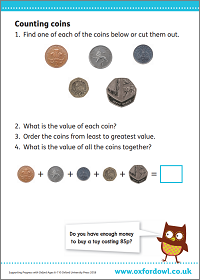
5. Partition numbers in different ways
Partitioning means to break numbers into parts. Use practical resources, such as straws grouped in tens, to partition numbers in different ways. For example, the number 54 can be partitioned into 50 + 4, 40 + 14, 30 + 24, 20 + 34, or 10 + 44.
This will help your child to see patterns in numbers as they develop their calculation skills.
6. Using number facts
To help reinforce your child’s understanding of number, try to find everyday opportunities for them to use known number facts to solve problems.
This is a really easy thing to do at home and in the shops. For example:
‘If we buy 7 apples and 3 bananas – how many pieces of fruit do we have altogether?’ ‘If we have 10 people coming to your party and we have 5 party bags, how many more do we need to buy?’
- Age 3–4 (Early Years)
- Age 4–5 (Reception)
- Age 5–6 (Year 1)
- Age 6–7 (Year 2)
- Age 7–8 (Year 3)
- Age 8–9 (Year 4)
- Age 9–10 (Year 5)
- Age 10–11 (Year 6)
- Year 1 (age 5–6)
- Year 2 (age 6–7)
- Year 3 (age 7–8)
- Year 4 (age 8–9)
- Year 5 (age 9–10)
- Year 6 (age 10–11)
- Help with times tables
- Ratio & proportion
- Learning to tell the time
- Numicon parent guide
- MyMaths parent guide
- Maths activity books

Or search by topic
Number and algebra
- The Number System and Place Value
- Calculations and Numerical Methods
- Fractions, Decimals, Percentages, Ratio and Proportion
- Properties of Numbers
- Patterns, Sequences and Structure
- Algebraic expressions, equations and formulae
- Coordinates, Functions and Graphs
Geometry and measure
- Angles, Polygons, and Geometrical Proof
- 3D Geometry, Shape and Space
- Measuring and calculating with units
- Transformations and constructions
- Pythagoras and Trigonometry
- Vectors and Matrices
Probability and statistics
- Handling, Processing and Representing Data
- Probability
Working mathematically
- Thinking mathematically
- Mathematical mindsets
- Cross-curricular contexts
- Physical and digital manipulatives
For younger learners
- Early Years Foundation Stage
Advanced mathematics
- Decision Mathematics and Combinatorics
- Advanced Probability and Statistics
Place Value KS1
This collection is one of our Primary Curriculum collections - tasks that are grouped by topic.
Two-digit Targets
You have a set of the digits from 0 to 9. Can you arrange these in the five boxes to make two-digit numbers as close to the targets as possible?
Mr Gilderdale is playing a game with his class. What rule might he have chosen? How would you test your idea?
Snail One Hundred
In this game, you throw a dice and move counters along the snail's body and in a spiral around the snail's shell. It is about understanding tens and ones.
Round the Two Dice
This activity focuses on rounding to the nearest 10.

Light the Lights
Investigate which numbers make these lights come on. What is the smallest number you can find that lights up all the lights?
If you put three beads onto a tens/ones abacus you can make the numbers 3, 30, 12 or 21. What numbers can be made with six beads?
Digit Addition
Try out this number trick. What happens with different starting numbers? What do you notice?
Largest Even
How would you create the largest possible two-digit even number from the digit I've given you and one of your choice?

- International
- Schools directory
- Resources Jobs Schools directory News Search
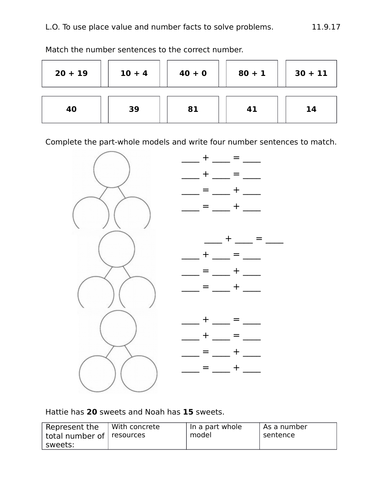
Using place value to solve problems. Year 2, 2 lessons, differentiated, worksheets and IWB slides
Subject: Mathematics
Age range: 5-7
Resource type: Worksheet/Activity
Last updated
2 September 2022
- Share through email
- Share through twitter
- Share through linkedin
- Share through facebook
- Share through pinterest

Creative Commons "Sharealike"
Your rating is required to reflect your happiness.
It's good to leave some feedback.
Something went wrong, please try again later.
Empty reply does not make any sense for the end user
Campbell164
Thank you a great help recapping on Place Value
IWB resources and children's activities.<br /> Thanks so much for this...i was losing the will to live with this objective. Complete life saver
Report this resource to let us know if it violates our terms and conditions. Our customer service team will review your report and will be in touch.
Not quite what you were looking for? Search by keyword to find the right resource:

- Home Learning
- Free Resources
- New Resources
- Free resources
- New resources
- Filter resources
- Childrens mental health
- Easter resources
Internet Explorer is out of date!
For greater security and performance, please consider updating to one of the following free browsers
Place Value Charts Lesson
This Year 2 Place Value Charts lesson covers the prior learning of partitioning numbers, before moving onto the main skill of place value charts.
The lesson starts with a prior learning worksheet to check pupils’ understanding. The interactive lesson slides recap the prior learning before moving on to the main skill. Children can then practise further by completing the activities and can extend their learning by completing an engaging extension task.
National Curriculum Objective Mathematics Year 2: (2N2a) Read and write numbers to at least 100 in numerals and words Mathematics Year 2: (2N3) Recognise the place value of each digit in a two-digit number (tens and ones) Mathematics Year 2: (2N4) Identify, represent and estimate numbers using different representations, including the number line
Get the most from lessons!

Resources for teachers

Interactive activities for children
2 Teaching Support
Subscription
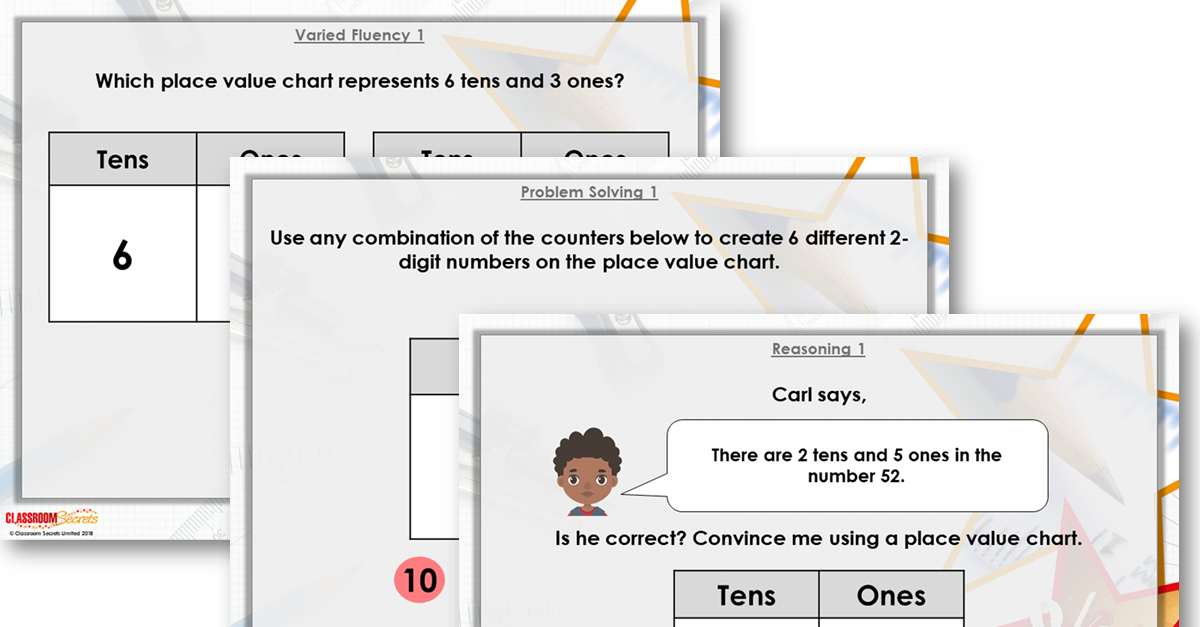
Modelling Powerpoint
This powerpoint can be used to model the questions that the children will complete on the Varied Fluency and Reasoning & Problem Solving worksheets as part of this lesson.
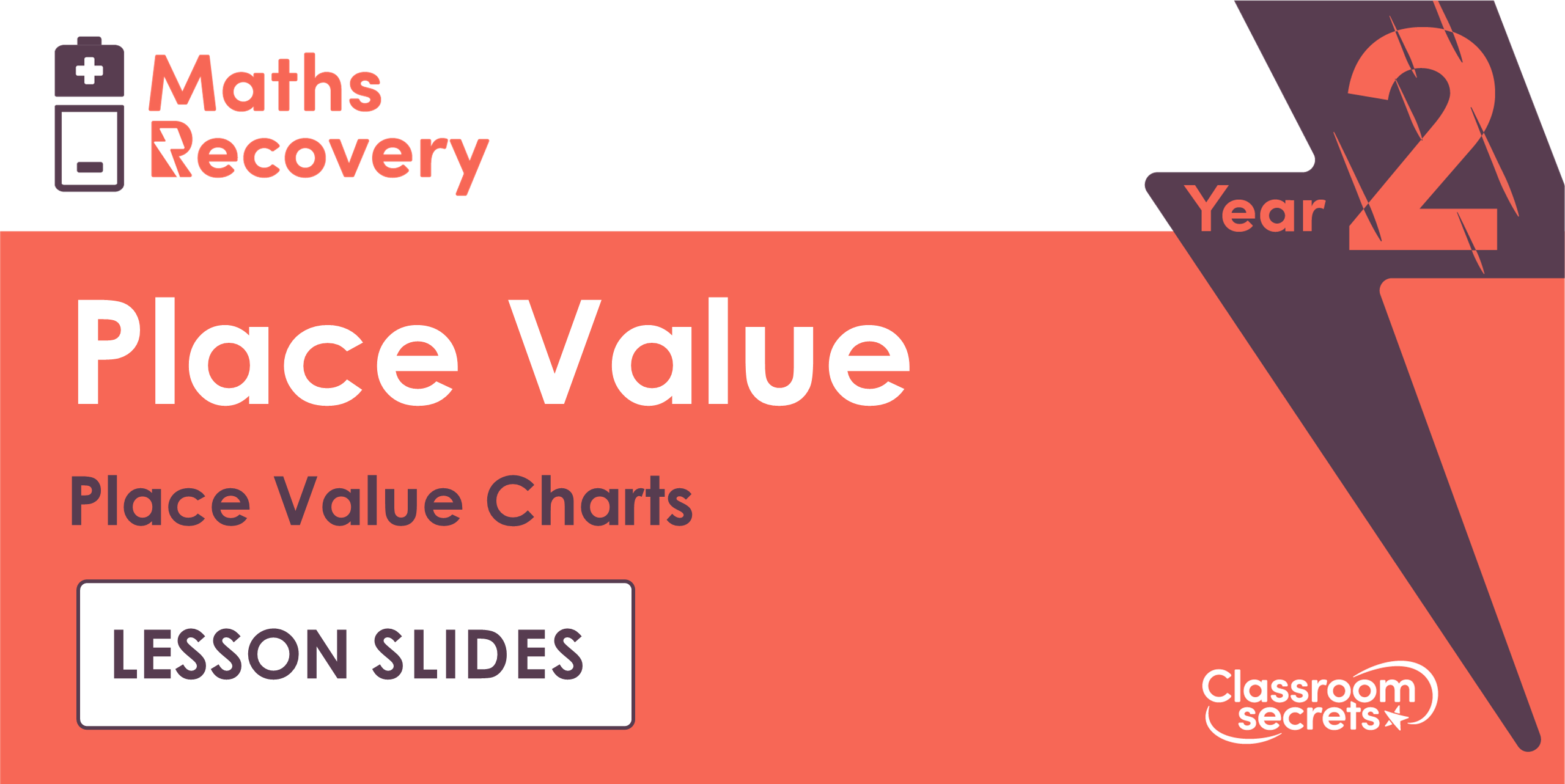
Lesson Slides
These lesson slides guide pupils through the prior learning of partitioning numbers, before moving onto the main skill of place value charts. There are a number of questions to check pupils' understanding throughout.
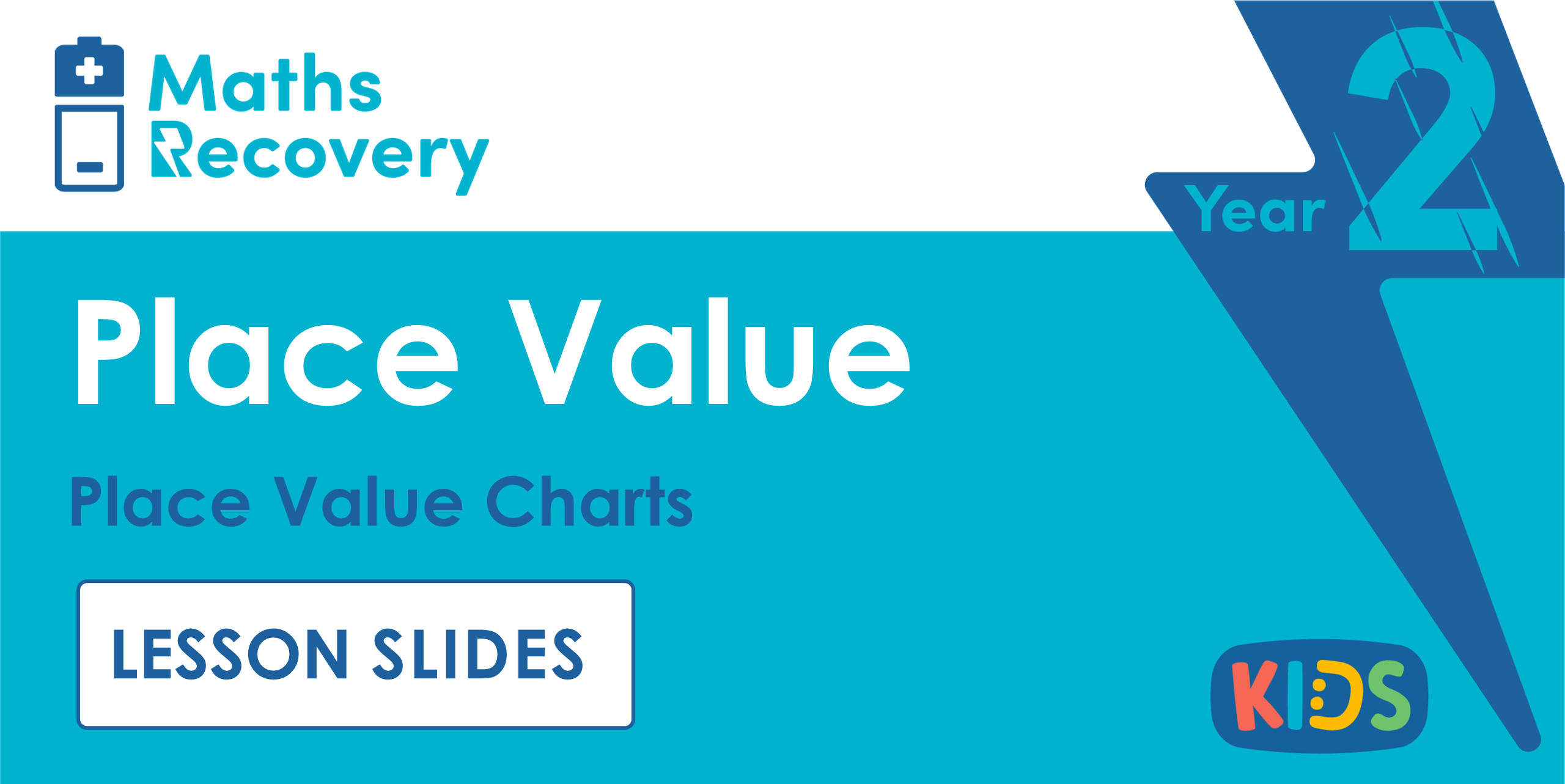
These are the same as the lesson slides on Classroom Secrets. You can assign this as an activity for pupils to access individually in school or remotely from home.
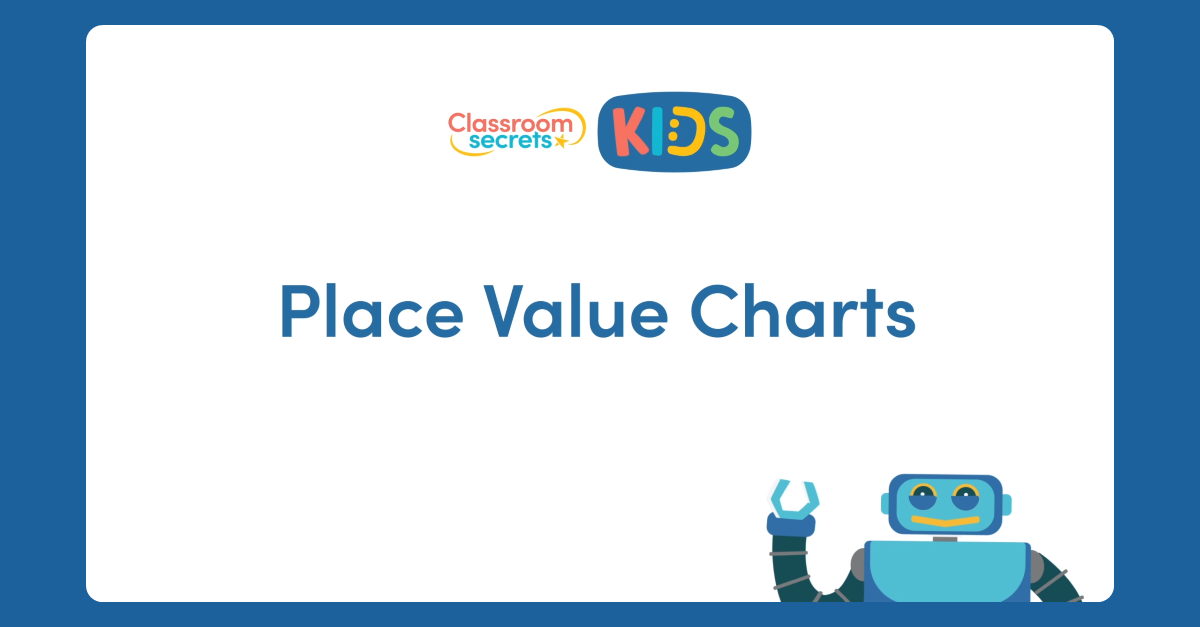
Video Tutorial
In this Place Value Charts Video Tutorial, Katie shows pupils how to partition 2-digit numbers into tens and ones on a place value chart, using lolly sticks to represent numbers.
1 Prior Learning
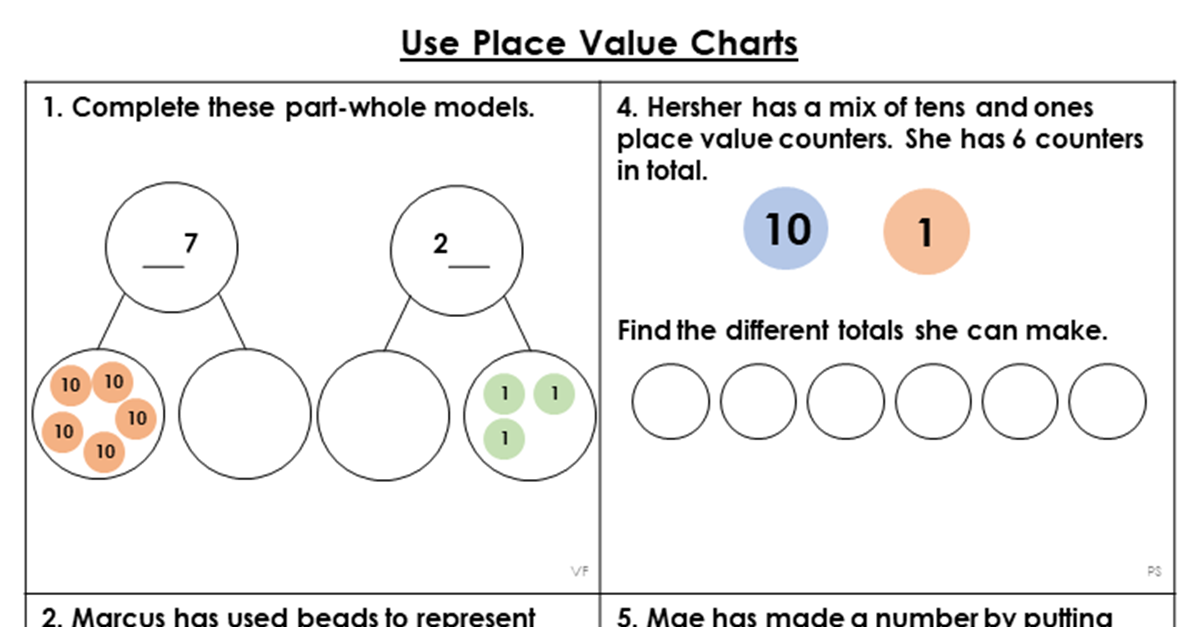
This worksheet recaps prior learning of partitioning numbers, before moving onto the main skill of place value charts.
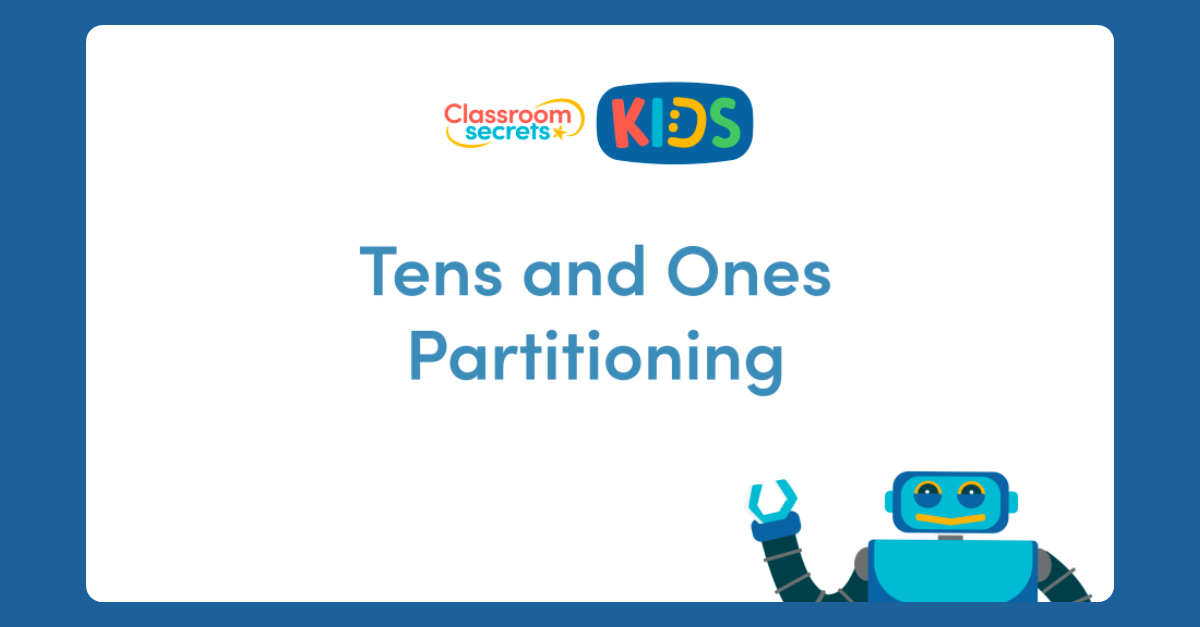
In this Tens and Ones Partitioning Video Tutorial, Katie shows pupils how to partition a 2-digit number into tens and ones.
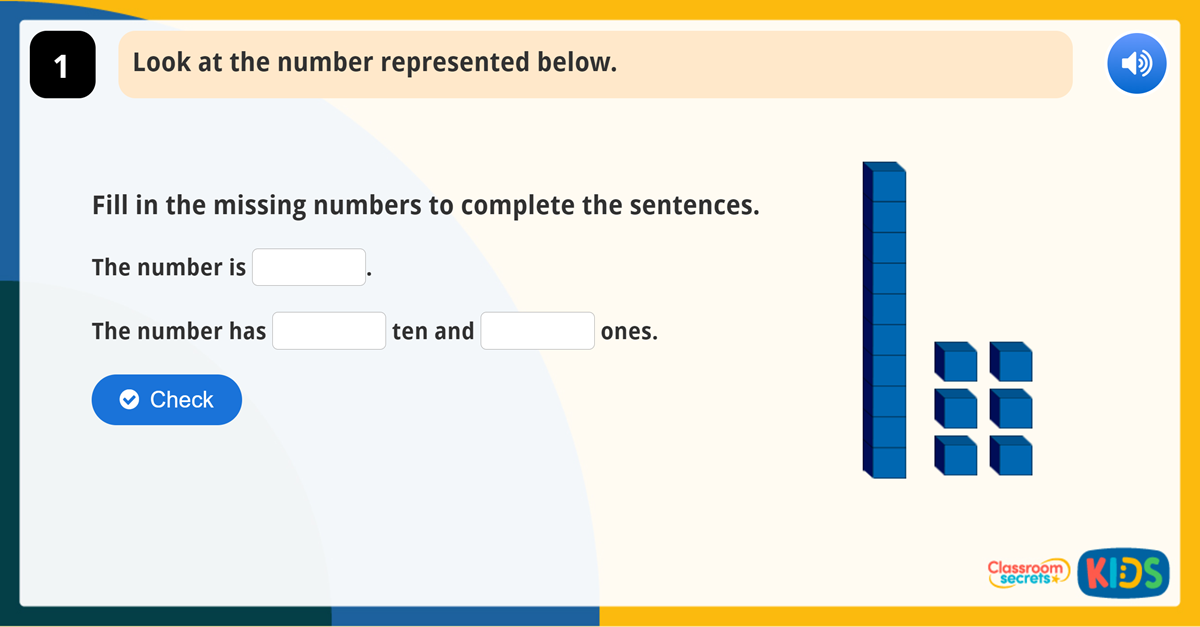
Interactive Activity
This Year 1 Tens and Ones Game has been designed to check pupils' understanding of partitioning numbers into tens and ones.
2 Practical Activities

Practical Activities
These practical activities include tasks covering a range of provision areas for pupils to practise the main skill of using place value charts.
2 Varied Fluency
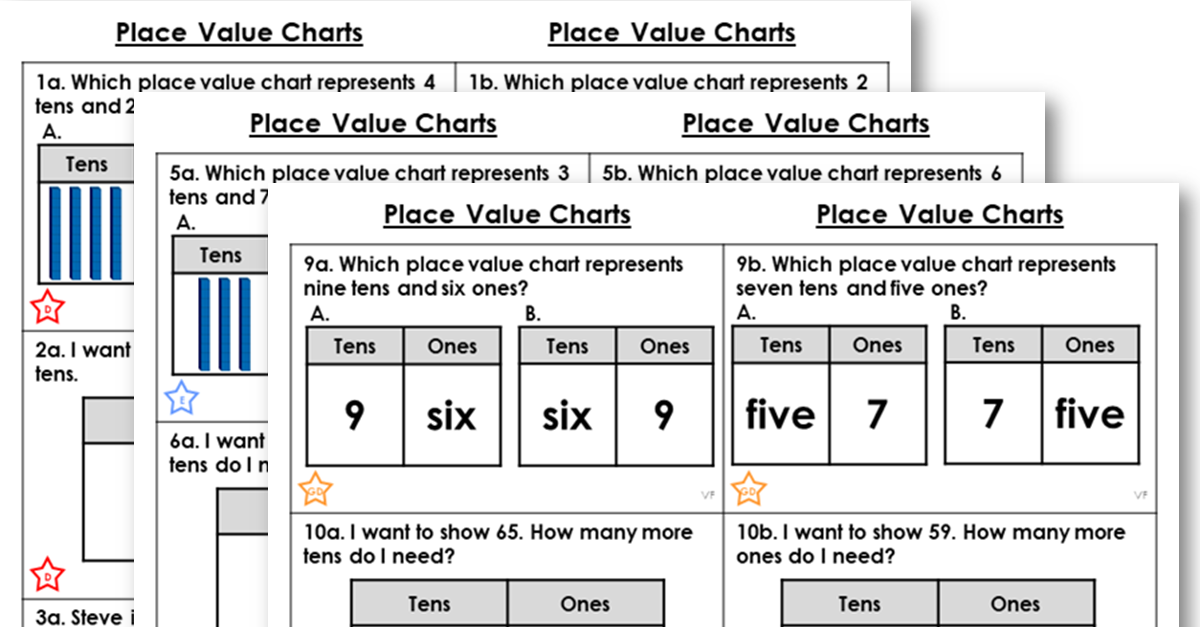
This differentiated worksheet includes varied fluency questions for pupils to practise the main skill of this lesson.
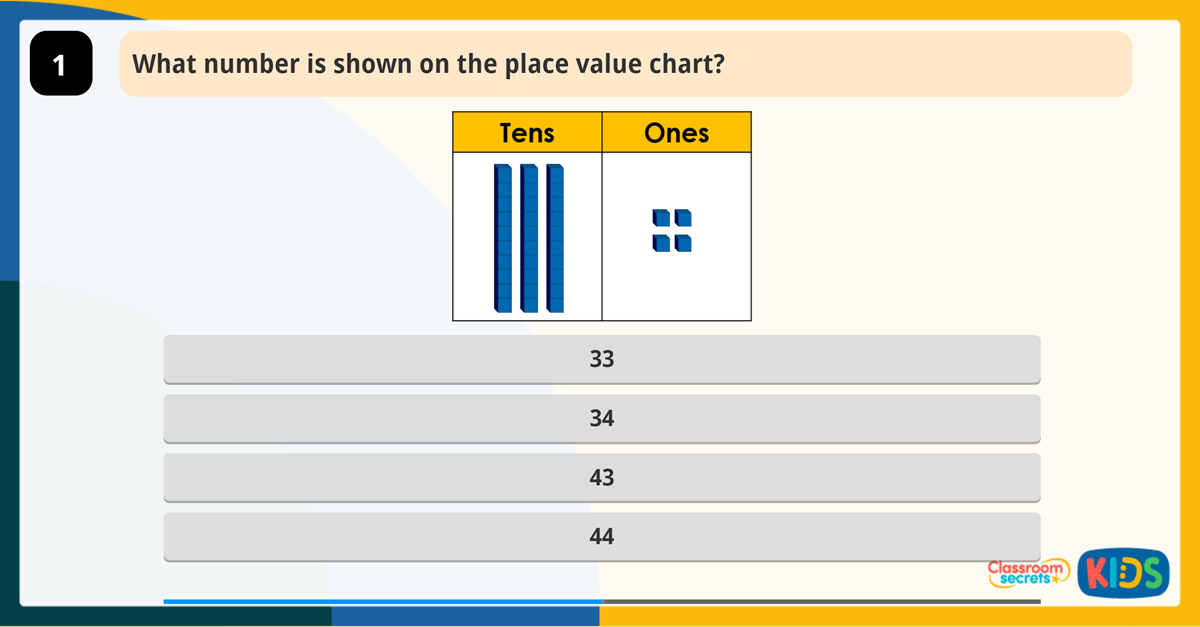
This Year 2 Place Value Charts Game aims to support pupils’ basic understanding of place value within 100, and encourage children to represent numbers in different ways.
2 Reasoning & Problem Solving
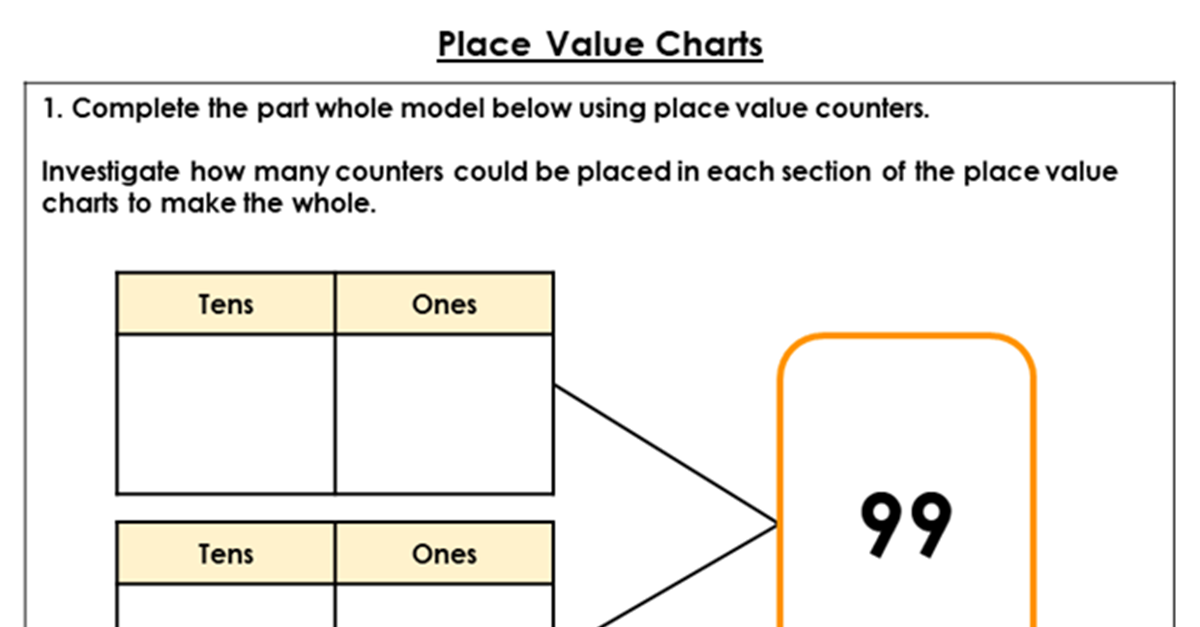
Discussion Problem
This worksheet includes two discussion problems which can be used in pairs or small groups to further pupils' understanding of the concepts taught in this lesson.

This differentiated worksheet includes reasoning and problem solving questions to support the teaching of this step.

Mixed Practice
This worksheet includes varied fluency, reasoning and problem solving questions for pupils to practise the main skill of place value charts using Base 10.
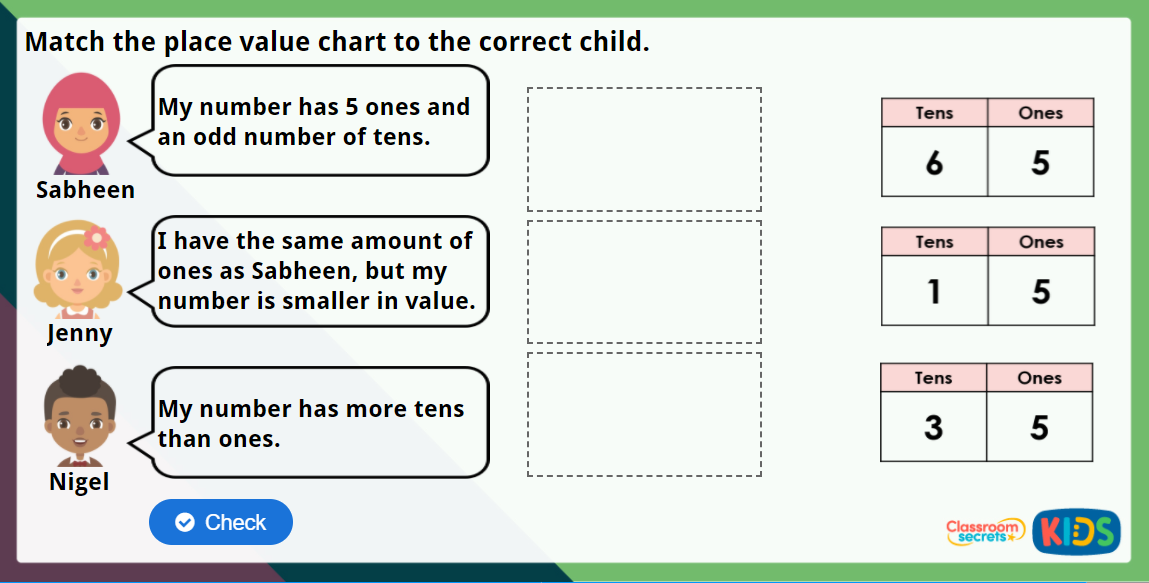
This Year 2 Place Value Charts Maths Challenge is designed to check pupils' ability to read and represent 2-digit numbers in a place value chart.

This differentiated worksheet includes varied fluency and reasoning and problem solving questions to support the teaching of this step.
2 Additional Activities
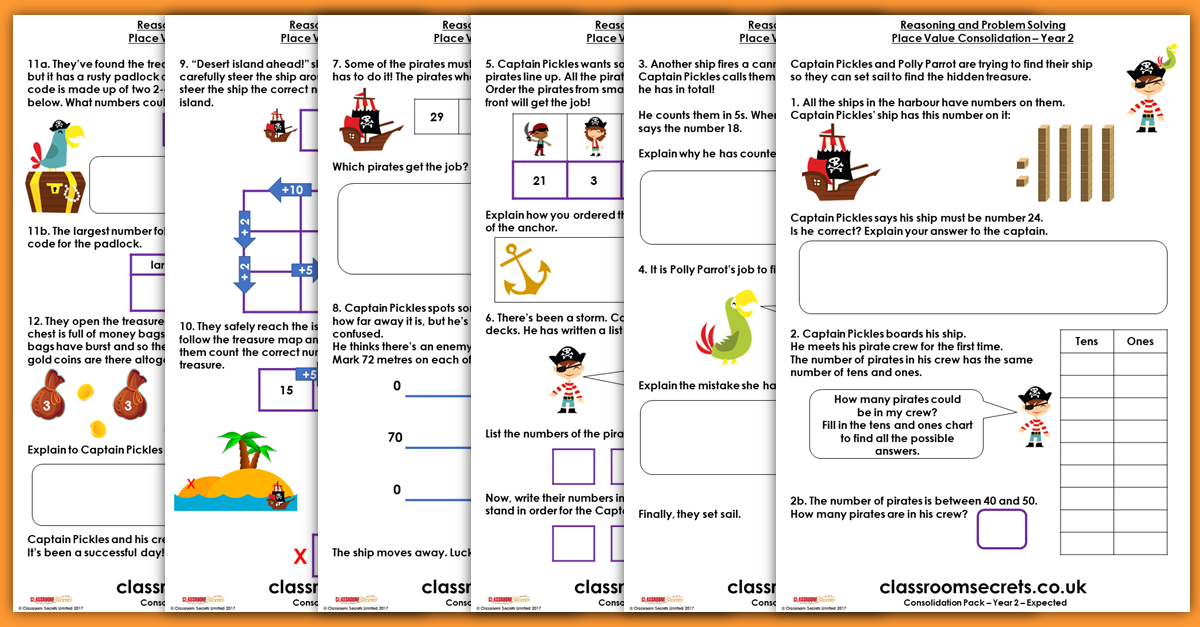
Consolidation Pack
This resource is aimed at Year 2 Expected and has been designed to give children the opportunity to consolidate the skills they have learned in Autumn Block 1 – Place Value.

Learning Video Clip
Jib is responding to a distress signal from the planet Farlax. He needs your knowledge of place value charts to help him find the source of the signal and help the alien in distress.
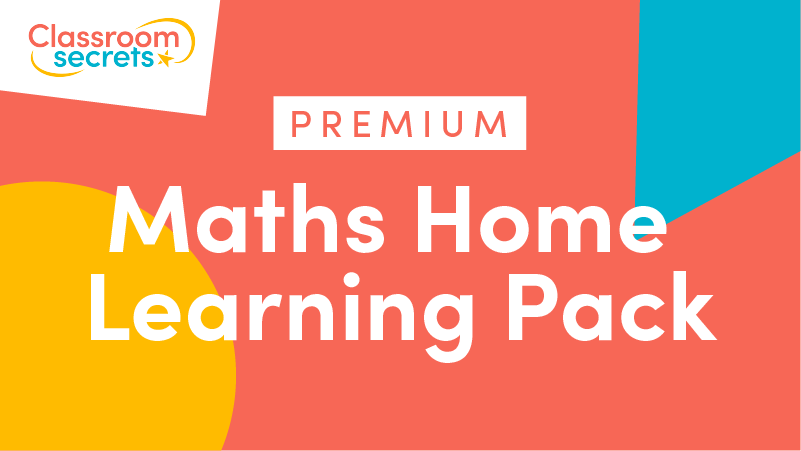
Home Learning Pack
This Autumn week 2 Maths pack contains varied fluency, reasoning and problem solving worksheets.
D Download Packs
Stay in touch.
01422 419608
[email protected]
Interested in getting weekly updates from us? Then sign up to our newsletter here!

Information

- Cookie Policy
- Privacy Policy
- Terms and Conditions
Copyright: Classroom Secrets 2024
Company number: 8401067
VAT number: 248 8245 74
- Terms & Conditions
Designed by Classroom Secrets

IMAGES
VIDEO
COMMENTS
Students will gain the key skill of recognising place value in a two-digit number, identifying and representing different numbers, comparing and ordering numbers, and using place value to solve number problems. Through a variety of activities, you can engage children's imagination and build their comprehension of place value. Using activities such as Secret Symbols and Solve the Snakes, you ...
Year 2 Place Value Bundle. Everything you need to teach Place Value for Year 2! Editable Teaching Slides Maths Vocabulary Cards Reasoning Tasks 17 Differentiated Lessons Week 1: L1- Count objects to 100 and read and write numbers to 100 in numerals and words L2- Count objects to 100 and read and write numbers to 100 in numerals and words L3- Represent Numbers to 100- Bead strings L4- Represent ...
Activities and Games Year 2 Mastery - Fluency, Reasoning and Problem Solving - Place Value. Place Value Primary Resources. Tea Party Themed Tens and Ones Activity Sheet. 4.0 (1 review) ... Year 2 Compare and Order Numbers Place Value Maths Mastery Challenge Cards. 4.8 (4 reviews) Year 2 Count in Steps of Twos, Threes, Fives and Tens Place Value ...
Number: Number and Place Value with Reasoning +COUNTING Year 1 Year 2 Year 3 Year 4 Year 5 Year 6 count to and across 100, forwards and backwards, ... Number: Number and Place Value with Reasoning PROBLEM SOLVING use place value and number facts to solve problems solve number problems and practical problems involving these ideas.
In Year 2, your child will learn to compare and order numbers from 1 to 100. They will recognise the place value of two-digit numbers, and will be able to use this to solve problems. They will also make more use of number lines and will be able to use less than (<), more than (>), and equals (=) symbols. The key words for this section are ...
Mathematics Year 2: Compare and order numbers from 0 up to 100; use <, > and = signs. Mathematics Year 2: Read and write numbers to at least 100 in numerals and in words. Mathematics Year 2: Use place value and number facts to solve problems . Small Steps: Count objects to 100 and read and write numbers in numerals and words. Represent numbers ...
The resources focus on the following objectives and small steps: Year 2 Maths' National Curriculum Objectives. Recognise the place value of each digit in a two digit number (tens, ones) Compare numbers from 0 up to 100. Use <, > and = signs. Use place value and number facts to solve problems. White Rose Small Steps.
Place Value: Year 2. This bundle contains three workbooks (with answers), three PowerPoint lessons and progress checks to support the delivery of the Year 2 Place Value - Autumn Term White Rose (WRM) 'small steps' programme for weeks 1 to 3. There are a total of 68 worksheets / activities (concrete, pictorial and abstract) linked to the White ...
Problem-solving worksheets are great for independent learning and developing children's understanding of various topics, including place value! This set contains differentiated worksheets, so you can easily support classes of mixed ability or challenge any students who have already mastered the basics. Each sheet has clear answer boxes for ...
2014 National Curriculum Resources Maths Key Stage 1 - Year 1, Year 2 Year 2 Number - Number and Place Value Use place value and number facts to solve problems. Curriculum for Wales / Cwricwlwm i Gymru Curriculum for Wales - English Medium Areas of Learning and Experience Mathematics and Numeracy The number system is used to represent and ...
Year 2 Reasoning Questions - Place Value December 2018 . Page 2 of 5. Page 3 of 5. Page 4 of 5. Page 5 of 5. Represent Numbers Reasoning and Problem Solving Place 36 on each of the number lines below: 100 One of these images does not show 23. C does not show 23, it Can you explain the mistake? How many two digit numbers can you
Age 5 to 7. Challenge Level. In this game, you throw a dice and move counters along the snail's body and in a spiral around the snail's shell. It is about understanding tens and ones.
JPG, 128.64 KB. JPG, 183.31 KB. Place Value Charts - Year 2. In this KS1 maths teaching resource, pupils begin to use place value charts to aid understanding of place value. These activities cover the year 2 curriculum objectives in the maths programme of study (Number - number and place value) and supports the White Rose small steps guidance ...
Problem Solving with Place Value. I designed this problem-solving lesson to deepen students’ understanding of place value to connect it to other aspects of mathematics, including listing permutations, odd and even numbers and money. By linking to these topics, the questions are challenging yet remain accessible to students in key stage 3 ...
Reasoning and Problem Solving Place Value Consolidation - Year 2. 1. Captain Pickles is not correct. He has 4 tens and 2 ones so his ship is number 42. 2a. The possible numbers of pirates in his crew are: 11, 22, 33, 44, 55, 66, 77, 88, 99. 3. He has counted them incorrectly.
Reasoning and Problem Solving - Comparing Numbers - Year 2 Developing. 4a. digits cards. 4b. digits cards. 5a.Sarah is thinking of a number. It is greater than thirty-five. It is less than seven tens. The tens digit is one less than the ones digit.
Reasoning and Problem Solving Add 2-Digit Numbers 2 Reasoning and Problem Solving Add 2-Digit Numbers 2 Developing 1a. C 2a. A and D; B and C 3a. Scarlett is incorrect. She has forgotten to add the extra 10 after exchanging the ten ones. The answer should be 71. Expected 4a. B 5a. A and B; C and D 6a. Noah is incorrect. He has forgotten to
Year 2 resource. 2 lessons on using place value to solve problems. Differentiated 2/3 ways. Based on White Rose Hub Maths schemes. Included fluency, reasoning and problem solving.
Investigate how numbers can be represented on a place value chart with this super set of mastery activity cards that support the year 2 White Rose Maths small step 'Use a place value chart'. They contain fluency, reasoning and problem-solving activities, along with extra opportunities for learning in the form of adult guidance. This resource links to the national curriculum maths aim ...
This Year 2 Place Value Charts lesson covers the prior learning of partitioning numbers, before moving onto the main skill of place value charts. ... This worksheet includes varied fluency, reasoning and problem solving questions for pupils to practise the main skill of place value charts using Base 10. Login to download. Subscription.
Dienes 1-50 Place Value Peg Matching Game. 3-Digit Number Place Value Board Game. Base Ten Place Value Board Game. Animals Place Value Mosaic Differentiated Worksheets. Monster Math Place Value to 100s Worksheet. Place Value 2-Digit Numbers Money Worksheet. Children solve place value reasoning questions involving two-digit numbers.
Problem-solving worksheets are great for independent learning and developing children's understanding of various topics, including place value. This great set contains differentiated worksheets, so you can easily support classes of mixed ability or challenge any students who have already mastered the basics, making them incredibly versatile.
Reasoning and Problem Solving Primary Resources. Multiplication and Division Word Problems Multiply and Divide by 10 100 1000 Maths Challenge Cards. 4.7 (6 reviews) Year 4 Number and Place Value Warm-Up Challenge Cards. 4.8 (11 reviews)